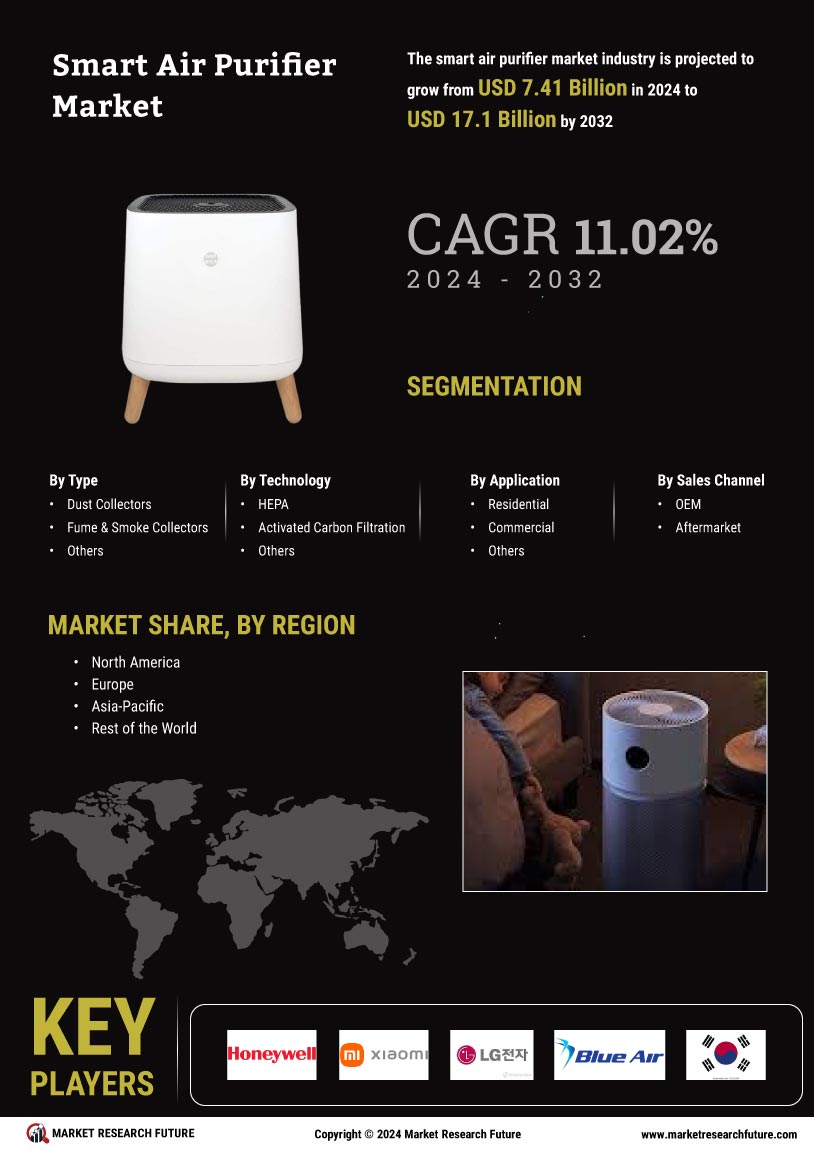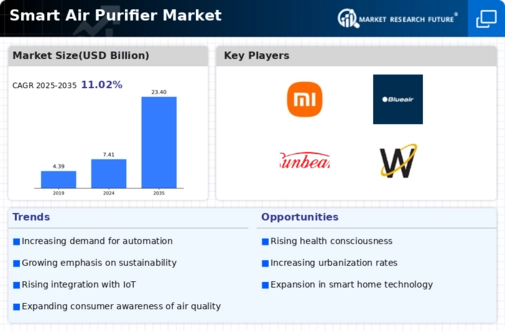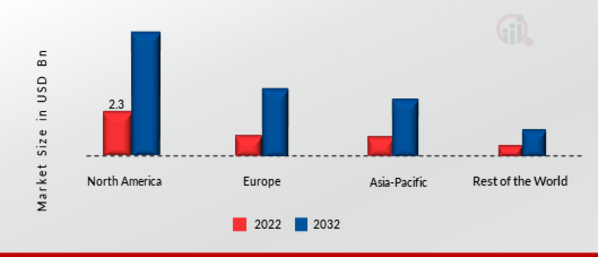Smart Air Purifier Market Summary
As per Market Research Future Analysis, the global smart air purifier market is projected to grow from USD 7.41 Billion in 2024 to USD 17.1 Billion by 2032, with a CAGR of 11.02% during the forecast period. The market was valued at USD 6.6 Billion in 2023, driven by rising consumer demand for improved lifestyle and increased smoke production during home cooking. The North American region is expected to dominate the market due to heightened awareness of air pollution's health impacts, while the Asia-Pacific region is anticipated to grow at the fastest CAGR, fueled by rising disposable incomes and urbanization.
Key Market Trends & Highlights
Key trends driving the smart air purifier market include technological advancements and increasing consumer awareness.
- Market size in 2024: USD 7.41 Billion; projected to reach USD 17.1 Billion by 2032.
- CAGR of 11.02% from 2024 to 2032.
- HEPA technology segment generated the most revenue due to its efficiency in removing airborne contaminants.
- Residential application segment accounted for the largest revenue share as awareness of indoor air pollution grows.
Market Size & Forecast
| 2023 Market Size | USD 6.6 Billion |
| 2024 Market Size | USD 7.41 Billion |
| 2032 Market Size | USD 17.1 Billion |
Major Players
Key players include Honeywell International Inc. (US), Xiaomi (China), LG Electronics (South Korea), Blueair (Romania), and Koninklijke Philips N.V (Netherlands).






